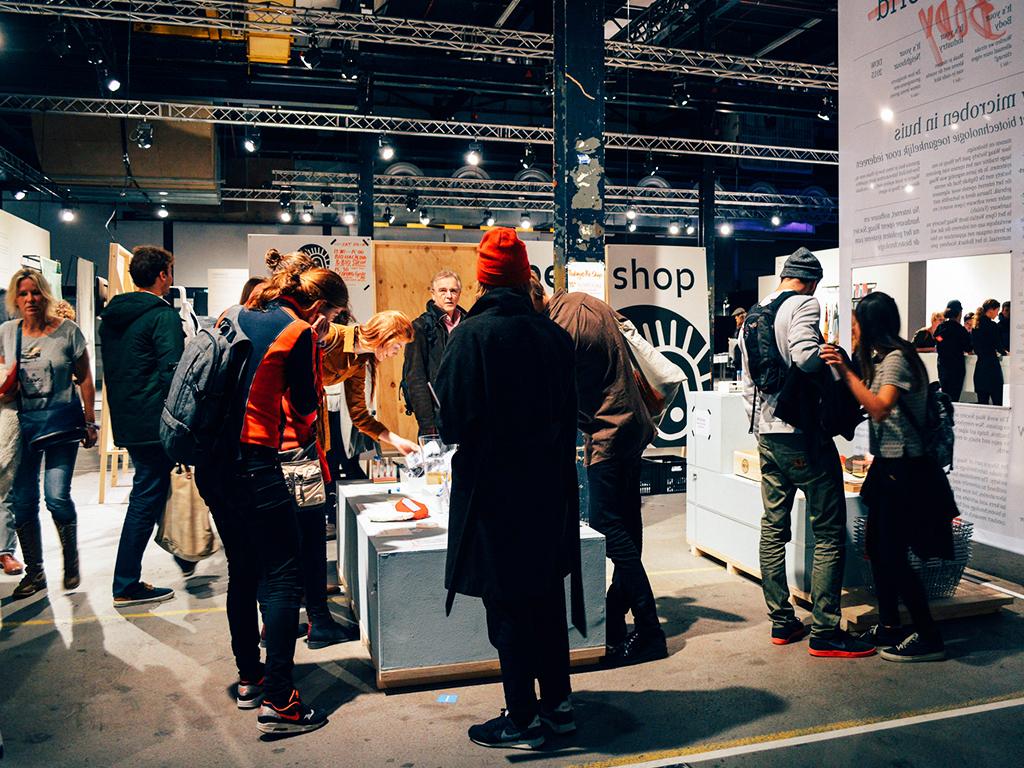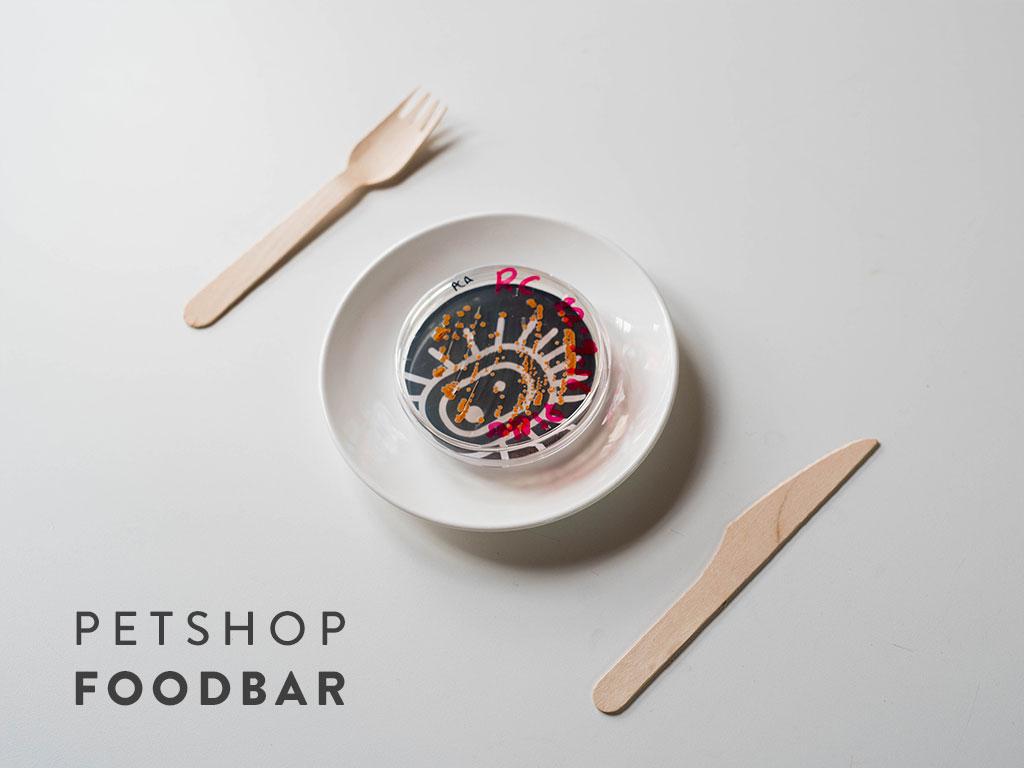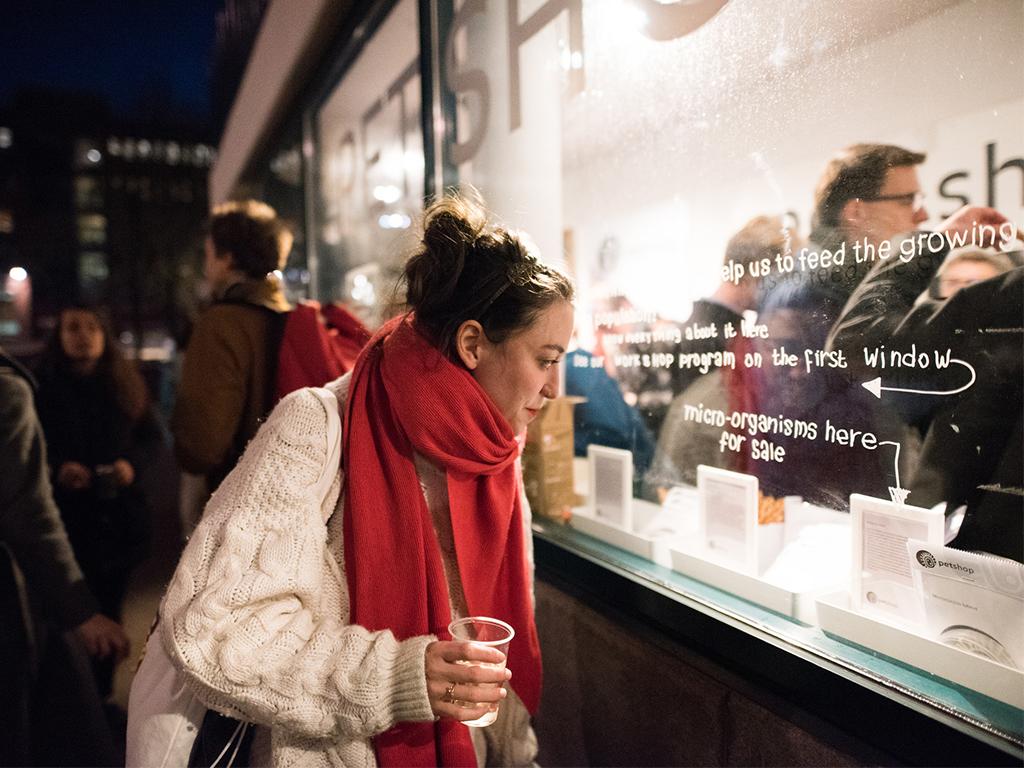Each October, thousands of designers gather in the city of Eindhoven to present their works to the public during Dutch Design Week. This year, Waag wondered: what would it look like if we treated micro-organisms with the same care and attention that we give to our dogs, our cats, our fish—even our plants? To explore this question, we brought to life the microbial pet shop from the Open Wetlab. During the week, I traveled to Eindhoven to help work the stand for our project. The following is an account of my experiences.
The Petshop
When I arrived in Eindhoven for this year's Dutch Design Week, the skies were overcast and threatening rain. My colleague, María, met me at the entrance to the Klokgebouw and informed me as we rushed through the building's halls that our stand—our microbial pet shop—was really busy. She was right. Our stand was bustling with prospective micro-pet owners examining petri dishes full of slime molds, fungi, and bacteria. Several teenagers were peering into a vinegary jar of kombucha and wrinkling their noses in disgust.
“Pets are 5 euros, and microscopes are 20!” María managed to say before being pulled aside to answer questions.
The majority of people who dropped by were interested—if a little confused. “What exactly are you doing here? What is this?” people asked. “You're really selling microbes? As pets?” I explained to the best of my ability that we were exploring the relationships humans have with micro-organisms through asking people to treat them as companions. The idea, I said, was to form a connection with the micro-organism that most appealed to you by reading the descriptions of their various “personalities.”
Yes, we had divided the micro-pets into “personality” types. Why? Because anthropomorphism is a powerful tool that humans use to connect with other species all the time. Connecting with something radically different from yourself becomes much easier when you can find some common ground. So, if people were going to form bonds with our micro-pets, the little guys had to have character. And character we gave them! Slime molds were considered clever and outgoing, while the spirulina (an algae) was described as more placid and laid back. We dubbed the fuzzy, oyster mushroom mycellium the “Golden Retriever” of the micro-pet world.
Hours flew by as I was swept up in the wonder of our visitors. I became a slime mold enthusiast and let every customer know that they were—far and away—the best pets. Two young students lingered by the counter for close to half an hour asking questions and scouring our stock. “What's this one do?” they asked. “And this one? And where does this one live? And what does it eat? And what can you use it for?” In the end, they decided to buy our “Catch Your Pets in the Wild” kit: a petri dish full of agar and a cotton swab for taking samples of your own mystery bacteria.
By the end of the day, we had almost sold out of slime molds (possibly due to my own over-enthusiasm). So, María taught me how to transfer small samples of the organisms into new petri dishes to replenish our stock. I wondered aloud at how forlorn the small specks of yellow slime mold looked in their nearly empty petri dishes. “They'll be ready by tomorrow morning,” María assured me. “They grow really quickly.”
“Hey,” she said, closing the cash box with a small key. “Do you want one? A slime mold? You seem like you really like them. You should take one of the plates we just made.”
And, that's how I ended up on the train back to Amsterdam cradling a petri dish seeded with the promise of a micro-pet—a creeping, yellow slime mold. I'm still thinking of a name.


